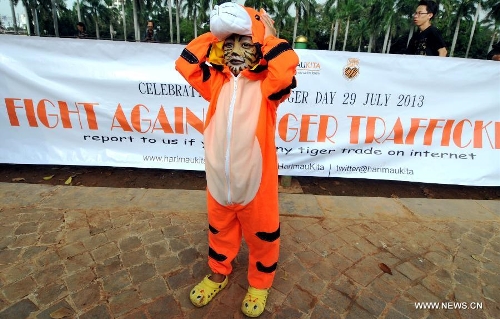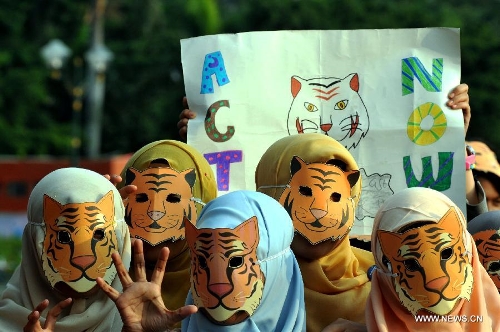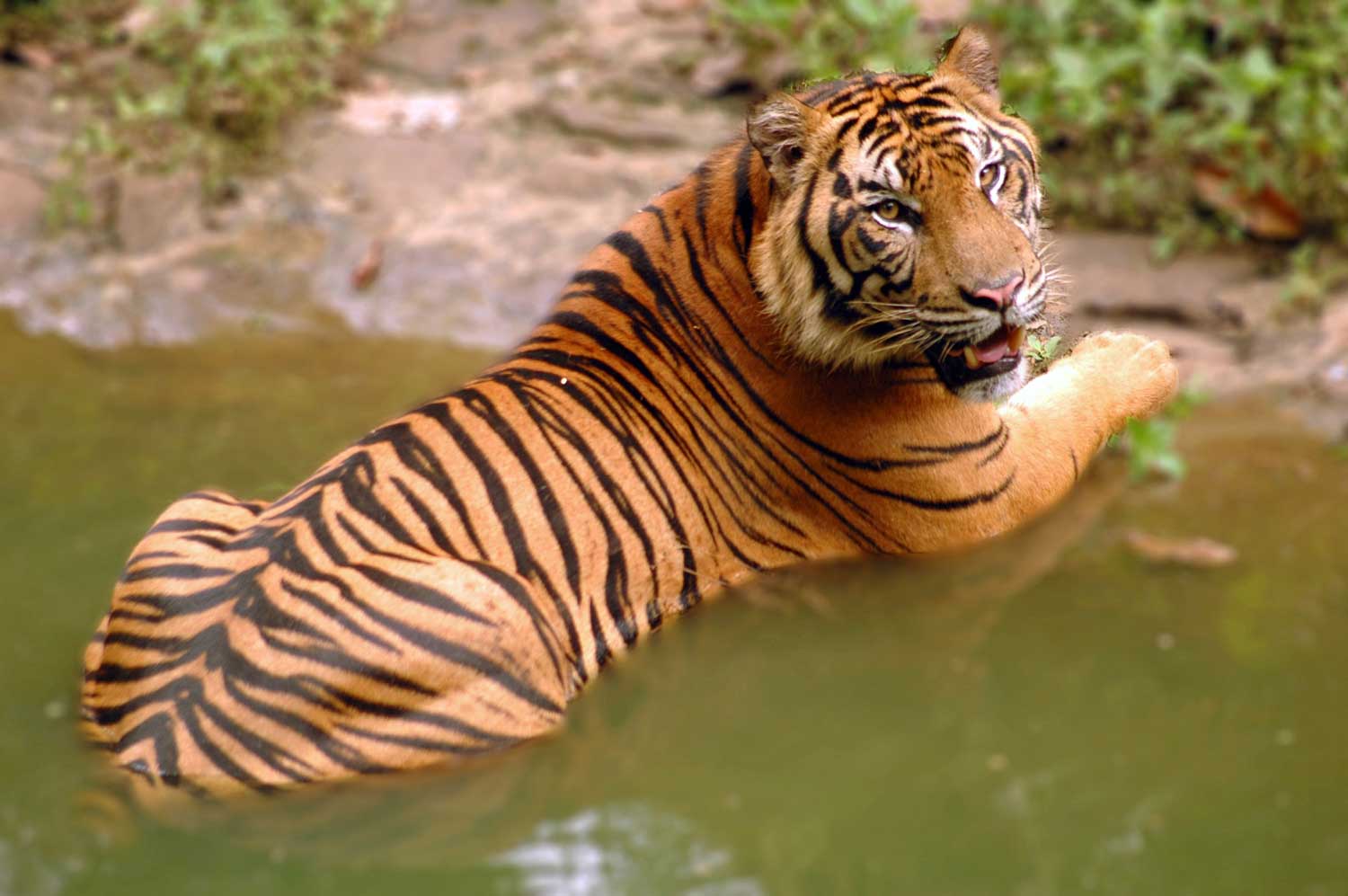Fundraisers run naked through London Zoo
-

Global Tiger Day is an opportunity to raise awareness of the need to protect our last remaining tigers for future generations.
The greatest threat to tiger survival is poaching. Trafficking of wildlife is the third largest area of illegal trade after arms and drugs, often for organized crime and terrorist organizations. It also directly harms the environment and natural resources as wildlife populations decline and ecosystems are altered.
USAID is working in several countries across Asia to reverse this devastating trend.
In Indonesia, the United States is partnering with four local NGOs in Sumatra to protect Sumatran tigers from poaching, habitat degradation and conflict with humans – the most serious threats to their survival. We’re also working to preserve habitats for a number of other Sumatran species, including orangutans, elephants and rhinos, through better forestry management. The population of Sumatran tigers is estimated to be as low as 250 tigers.
Global Tiger Day marked in Jakarta

A child wearing tiger's costume attends an activity marking the Global Tiger Day 2013 in Jakarta, Indonesia, July 29, 2013. The Global Tiger Day aims to promote the protection of the habitat of Sumatran tigers and increase awareness of tiger conservation in Indonesia.

Volunteers attend an activity marking the Global Tiger Day 2013 in Jakarta, Indonesia, July 29, 2013. The Global Tiger Day aims to promote the protection of the habitat of Sumatran tigers and increase awareness of tiger conservation in Indonesia.




Wall Street

-
Fundraisers run naked through London Zoo
Hundreds of animal lovers have earned their stripes running naked around London Zoo to raise money for Sumatran tigers.
Hundreds of animal lovers earned their stripes by running naked around a zoo to raise money for a rare subspecies of tiger.
The sponsored streak saw 300 brave runners get back to nature by stripping off to make their way through ZSL London Zoo in the after-hours event, watched by their supporters and some rather bemused animals.
Wearing nothing more than trainers, tiger masks and tiger ears, they ran a 300m course through the centre of the attraction, with some exhibitionists choosing to complete several laps of the circuit. Body paint and tiger stripe leg warmers were the streakers' only attempts at modesty.
Streak for Tigers, named after the collective noun for the animal, raised some £60,000 which will be ploughed into conservation work to protect the Sumatran tigers, of which there only remain 300 in the wild.
Brave participant Nic Coles, 34, from Biggin Hill, Kent, said it was "a great event".

"I was a bit nervous at first, but after seeing so many people turning out for it, it made it feel a lot easier." he said. "If it helps the tigers, I'd do it all over again."
Fellow streaker Son Osman, 31, from Bromley, south east London, said he had "jumped at the chance" to take part in the run.
Explaining why, he said: "It was the chance to get naked in a zoo, for the tigers. It was very liberating, and quite a unique experience."
James Wren, development director at ZSL, said: "Everyone got so excited about the event, they really got behind it. There was an amazing buzz in the crowd, both from the spectators and the participants who were running around naked. We only asked them to do one lap, but many carried on doing several laps around the zoo because they felt so liberated and free.
"The feedback has been overwhelming, from those involved in naturism to those who are just passionate about tigers. They were apprehensive and nervous, but when they were doing it, they just enjoyed it so much, they were delighted."





